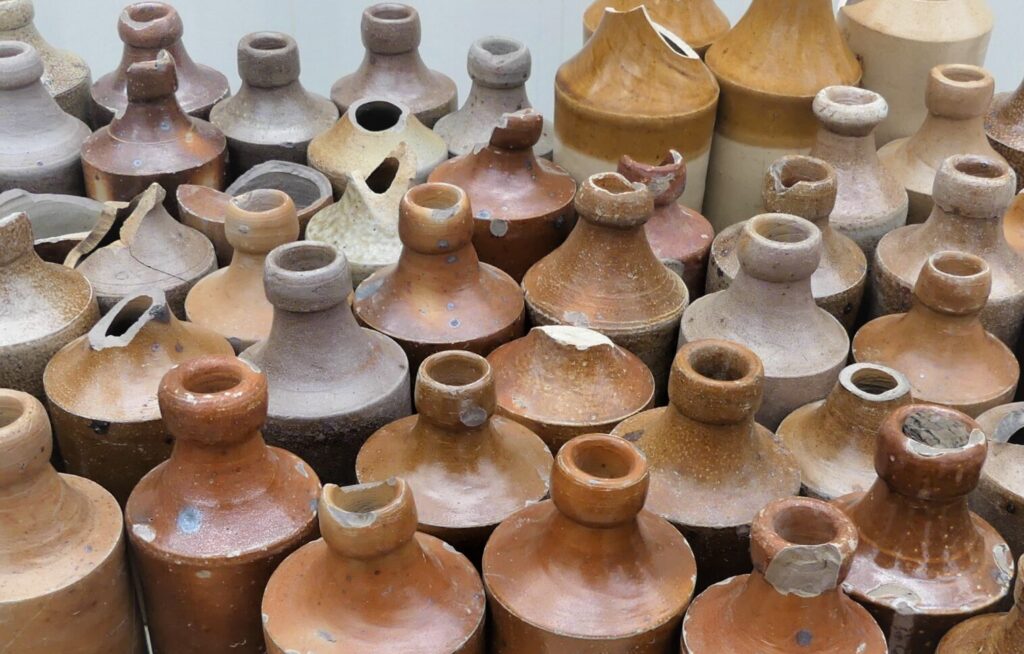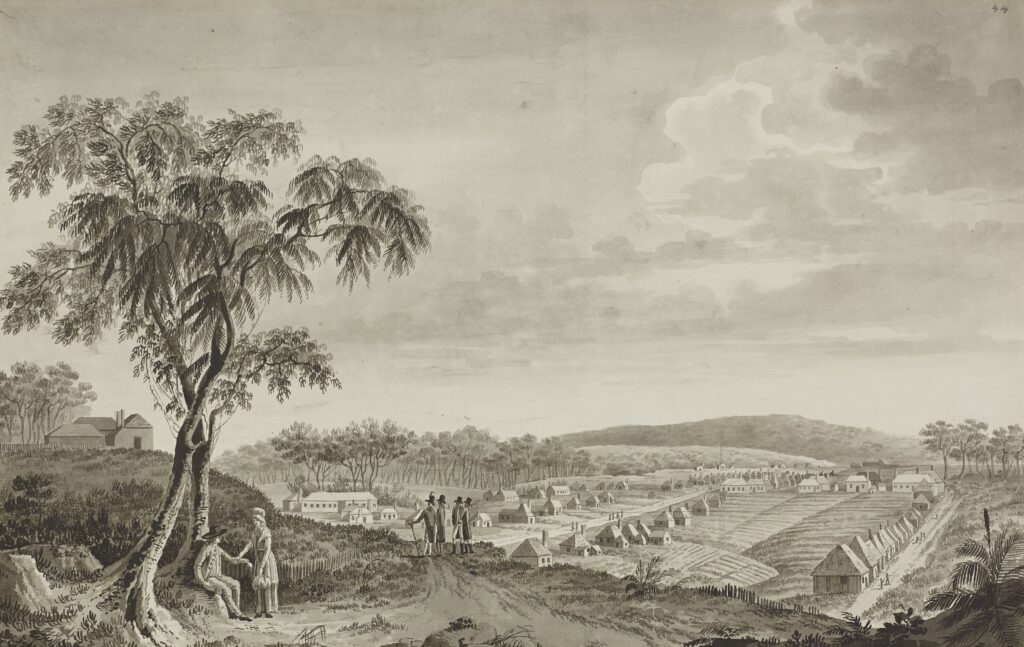
Aerated water and ginger beer makers
The archaeological investigations at Sydney Metro’s Parramatta station site have unearthed glass and stoneware bottles of all shapes and sizes.
A history of fizzy drinks
The technique of adding sodium carbonate to still water to create a seltzer, or what we now call ‘sparkling water’, was developed in England during the 1700s. Joseph Priestley’s 1772 publication Directions for Impregnating Water with Fixed Air led to a flurry of interest and invention in the machinery needed to make aerated waters, soda and ‘fizzy’ drinks. Johan Jacob Schweppe founded the Schweppes Company in 1783 in Geneva, Switzerland (240 years ago) and moved to London in 1792. His effervescent waters were promoted as tonic and a ‘cure’ for a variety of ailments.

Selection of torpedo bottles from a rubbish dump behind Miller’s cordial factory on George Street.
Torpedo bottles
One of the challenges of sparkling water was keeping the fizz in. Conventional bottles were sealed with a cork plug that dried out enough to allow the bubbles to escape. A new kind of bottle with a pointed base was patented by William F. Hamilton in 1809. Known as ‘torpedo’ or Hamilton bottles, these bottles had to be stored on their side, ensuring that the cork was moist from the liquid inside, preventing shrinkage and keeping the bubbles in.
The bottle shape was popular in the 1840s when glass bottles became cheaper to make and mineral water became more popular. By the 1860s, a new range of patent bottles with more secure stoppers were introduced.

Hamilton or ‘torpedo’ bottle made for the Schweppes Company, with paper label and leather strap handle. Source: Pinterest.
Cordial and ginger beer makers in Parramatta
George and Sarah Barton were shopkeepers and cordial makers in Parramatta. They lived and ran their business from George Street between 1848 and 1854. They sold a range of tea sets and tablewares in their ‘china shop’.
Following George’s death, Sarah auctioned off the whole of the ‘stock‑in‑trade’ along with ‘a quantity of ginger beer bottles’ from the cordial factory. Hundreds of stoneware ginger beer bottles were disposed in pits within their property. Stoneware bottles with ’G Barton’ and ‘S Barton’ hand‑inscribed have been found on archaeological sites around Parramatta.

Stoneware bottle with ‘S Barton’ hand-inscribed from a rubbish dump in the backyard of Barton’s George St shop.
Peter Miller and Co’s had a cordial factory at 41–47 George Street, Parramatta (later Woolcott’s Dispensary). Miller—a publican by trade—purchased the property in March 1854 and he operated an aerated water factory there in the 1850s and 1860s.
Hundreds of torpedo bottles, stoneware ginger beer bottles and wine bottles from his factory were dumped in a large pond behind Miller’s factory. Some of the bottles had the makers-mark of ‘Peter Miller’ and ‘P Miller & Co’.

Selection of ginger beer bottles from a rubbish dump behind Miller’s cordial factory on George St. One in the front row is
marked ‘P Miller’.

Portrait of a gentleman believed to be Peter Miller in the late 19th century. (Source: Jones 2009: 522).


